- Home
- Mack Maloney
Strike Force Delta Page 16
Strike Force Delta Read online
Page 16
From the nearby port it was just a short trip across the narrowest part of the Persian Gulf to landfall on Persia’s western shore. If Ishtar made it onto his waiting boat, it would be impossible for the Mossad or anyone else to get him until he popped up again, somewhere else.
Ishtar’s van pulled up to a small dock where a French-built yacht was waiting for him. The Mossad agents pulled in right behind him. Moving very calmly and naturally, one agent walked up to the passenger side of the van and pumped three bullets into Ishtar’s head. The van driver, a local terrorist confederate, got three in the hat as well, courtesy of the second agent.
Now the Israelis knew they had mere seconds to search Ishtar before the local police showed up. So, while one agent watched the road leading to the isolated dock, the other frisked Ishtar’s bleeding body. He found nothing.
Then he checked the canvas bag the man had been carrying, this as the second agent joined him. In the bag they found only a six-pack of high-grade, broadcastquality blank videotapes, along with Ishtar’s Iranian passport.
Attached to the passport was a small map of Afghanistan and Iran. In the lower right-hand corner, circled in red pen where the borders of the two countries met, was Ishtar’s apparent destination: the city of Khrash.
Chapter 15
The Ocean Voyager stole its way into the Persian Gulf under the same early-morning fog that would have given cover to Ishtar Abdula had he made it out of the port at Umm al Qaywayn.
The ship had sailed on afterburner speed since leaving the Suez Canal. Now that it was in the Gulf, its purpose was to provide as much support as it could for the strike force, up in the Afghan mountains, several hundred miles away.
Murphy was still living inside the Captain’s Room, going over every piece of information and communication the Ghosts had sent him. He’d just received the message that his old friends the Zabul were on board. And he’d previously arranged for the recon plane that the team needed. And after the buzzing of Khrash earlier that morning, the mooks certainly knew by now that the Crazy Americans were in the area.
But the hard part still lay ahead. Using the results of the Psyclops plane’s noisy photo mission, the images of which had been immediately relayed to the Ocean Voyager, and bottles and books and pieces of wood, Murphy had constructed a mock-up of the city of Khrash on the floor of his cabin. Thanks to the strange airplane’s spying capabilities, he’d been able to see not just up-to-date images of the terrorist city but also, through heat analysis of those images, where people were congregated, where weapons were stored, and other valuable pieces of intelligence.
From all this, the pictures and the mock-up, Murphy had been able to uncover some very curious, if disturbing, things about Khrash. For instance, he’d determined that the Taliban were concentrated in one part of the city, Al Qaeda fighters in another. How did he know this? Because the Taliban traditionally slept in large groups, sometimes taking over entire apartment buildings in order to house their fighters. There was a huge cluster of two- and three-story apartment buildings on the east side of Khrash, a slum by another name, with a lot of military equipment parked nearby. The Al Qaeda fighters, on the other hand, being higher up on the food chain than the Taliban, had taken up residence in more comfortable one-family houses on the west side, this after expelling the owners of course. The terrorists had no real equipment other than rifles and sidearms. Their location was closest to Iran, however, a shorter distance for them to flee should the roof fall in.
The other force in the city—the religious police—was scattered everywhere in between. Their main weapons were pickup trucks bearing largecaliber weapons. Known as technicals, these speedy hit-and-run gun platforms served to terrorize those lowly civilians unlucky enough to still live in Khrash. But the police also had some large ex-Soviet weapons at the main gate and at various points around the city.
The Psyclops plane also detected a very large mobile SAM weapon—a massive Russian-made SA-6—capable of firing a one-hundred red-pound warhead to heights exceeding 12 miles. This was such a dangerous, if one-shot, weapon, it appeared the religious police constantly moved it around the city so it wouldn’t present so tempting a target should regular U.S. forces ever decide to move in.
But Murphy noticed something even more disturbing: A certain part of the city seemed completely off-limits to everyone, Al Qaeda, Taliban, religious police—everyone. This was the southern part of the city, nearest to the Farāh River, where few people lived and many warehouses and repair shops were located. According to the Psyclop’s recon photos, nothing was moving in this area, except several heavily guarded trucks making what looked to be food deliveries to huge buildings that looked otherwise unoccupied.
He was baffled by this.
Sometime during the long night’s trip here to the Gulf, Murphy slowly became convinced that the strike team’s only hope for success was what he called the third option.
There were several reasons for this. His preliminary needs had turned out well: They needed recon, so they got the Psyclops plane. They needed military help, so they got his old friends the Zabul on board. They’d needed to put a scare into the mooks, so they’d buzzed the city and made sure everyone knew these were the Crazy Americans above them, people who had yet to show any mercy to anyone of the terrorist ilk, as the late warlord Sharif had just found out.
Then there was the makeup of the strike team itself. The State Department Security guys were very, very stealthy, cool but cruel. The Delta guys were great land warriors. The SEALs were good at guarding the flanks. Even the Marine mechanics and the regular Navy guys accompanying the strike force were seasoned shock troops, having participated in previous missions. The pilots who actually flew the helicopters, Air Force special operations guys, had also had some down and dirty combat experience, as did the DSA guys, Fox and Ozzi.
Murphy also knew that perceptions were important. There was a reason the World War Two flag raising on Iwo Jima, long before the battle itself was ever decided, had been a crucial factor in the eventual American victory. Every American soldier on the war-torn Pacific island was able to see the Stars and Stripes flying from the highest point of land, and they, too, were uplifted. In the same vein, every Japanese soldier who saw it was plunged into despair. There was power in Old Glory. Murphy would have to remember that, too.
So they had some things going in their favor, including the sky-high revenge-motive factor. But there was no getting around the fact that Khrash was a city crowded with terrorist fighters. And somewhere in the middle of them was Jabal Ben-Wabi.
How the hell were they going to get him?
During the night, all of the principals left aboard the Ocean Voyager stopped in and communed with Murphy for a while. The Spooks. Bingo. Even the Delta Thunder guys. They all studied the mock-up. They all prayed over the pictures. They offered advice. They answered questions, trying to visualize what the future might hold.
But in the end, the decision came down to Murphy alone.
The third option. Was it as impossible as it seemed? The Ghost Team had put together a strike force in an insanely short amount of time and then armed and fueled themselves. But it was a shoestring operation at best. Three helicopters, two shit-box F-14s, three dozen American soldiers, and what would probably amount to a few more dozen local fighters and their near-antique equipment.
And what lay ahead would be both mind-bogglingly dangerous and extremely complex. A city could change quickly during battle. Streets filled with rubble. Wrecked buildings became ideal hiding places for weapons. Fifteen thousand very pissed-off people running around with AK-47s and RPGs? That was Mogadishu times ten. The numbers didn’t lie.
But Murphy knew on several occasions in the last decade, during uprisings and wars in Africa, small mercenary groups numbering less than 100 fighters had defeated insurgency groups that had numbered in the thousands. It had happened in Angola; it had happened in Sierre Leone. Smaller, better-trained forces defeating overwhelmingly superior nu
mbers. And at least some of that fighting had taken place in cities.
So it wasn’t going to be easy. But it could be done.
Besides, with time slipping away, they had to move quickly.
That’s why Murphy decided, just before dawn, that the only way they were going to get Jabal Ben-Wabi was to go with the third option.
The Ghosts would invade the city.
All 36 of them.
Or at least that was the plan.
Chapter 16
The people who ran Khrash had a plan too.
It had come courtesy of the Iranian military, at the urging of the Iranian intelligence community, should the city someday be attacked by enemies of Kundez Sharif or by a refurbished Afghani army or even the U.S. military. This plan laid out several different ways to defend the city. It was based on tactics used in Iraq by Al Qaeda insurgents battling U.S. forces. The Iranians were helping these people, too, if just to bring even more instability to the region.
It was in Iran’s interest to keep Khrash as wild and woolly as possible. There were two ends to any pipeline. Just as Khrash served as a conduit for Al Qaeda fighters who needed to cool their heels in Iran, the dirty little city also served Iran as a pathway for its agents to move into not only Afghanistan but also the countries of Pakistan, Uzbekistan, Tajikistan, and beyond. Next to oil, Iran’s main export was Islamic terror. Having a way station right over the border helped them vastly in this enterprise.
Plus, should the American military ever come to the region in force, the plan set up Khrash just like the Iraqi insurgents set up Fallujah, except in a mirror image. Fallujah was a large city with a small percentage of terrorists; Khrash was a small city with a large percentage of terrorists—more than 80 percent in fact—and again, they were hard-core. If properly implemented, any attempt on the city would be long, slow, and bloody for the Americans. And the Iranians just couldn’t pass up seeing something like that. Thus the blueprint for a bloodbath in Khrash.
Having a plan was one thing, though. Getting it to work was another. That Khrash was filled with more than 15,000 seasoned Islamic fighters was not in dispute. But they were from many different groups, with no one leader.
One man then would be in charge of implementing the defense plan.
The man they called the Chief.
It said something about him that after the Psyclops plane buzzed the city, breaking nearly every window in its path, the Chief simply shed his clothes and went back to bed.
Just because Jabal Ben-Wabi had wet his pants at the first sign of the Crazy Americans, that didn’t mean the Chief had to. Quite the opposite, the Chief saw the Ghosts’ hurling of the gauntlet as an opportunity to get rid of them, to put an end to the mystique of the Crazy Americans once and for all. If the Chief did this, it would make him a big hero of the terrorist underworld. With that would come many benefits.
He went back to sleep thinking that to accomplish this he had to get into the heads of the Crazy Americans, just as they had gotten into the head of Jabal Ben-Wabi. The Chief was certain the Crazy Americans would try something in Khrash—the question was how could he turn it around on them and finally kill them all off for good?
He was not so dumb as to underestimate his enemy, not by much anyway. The message of the bloody hands had been very clever, as it operated on two levels. The Americans had sent the kardiss to him knowing that he would run the horrible message right to the highest Al Qaeda poobah in town. In this case, Jabal Ben-Wabi, the Patch.
And the anticipated effect happened. Jabal had turned into bee jelly. It was disturbing to see how the big, bad Patch reacted when he learned these nutty Americans were out to get him. It caused Jabal to go right down the Rabbit Hole, and frankly, the Chief was glad to be rid of him. Already on his way to becoming a mental basket case, the Patch would have proved nothing but a burden should any real fighting erupt.
But the Crazy Americans’ grisly message had proved one thing: they were here because the Patch was here. But why had they come for him? What had the Patch done to make the crazies fly to the ends of the earth to find him? To a place where even the rest of the U.S. military feared to tread?
The answer was easy. It was because of the girl, of course. It was the only explanation.
This made the Chief feel very confident. The Americans were going to war for the worst reason possible: love. Wars of love had been waged many times over the centuries. One side steals a woman. One side kills a woman. One side insults a woman. The other side seeks revenge. Wars of love. They always turned out bad for the avengers, as the Greeks eventually found out after Troy.
The Chief knew languages, too. The Chinese character for crisis had two images. One stood for “chaos,” but the other stood for “opportunity.” If the Americans were stupid enough to come to Khrash over a woman, then the Chief was smart enough to make them pay.
Besides, how scary could these Ghosts be?
While most people were still walking around in shock caused by the American plane’s surprise appearance over the city earlier in the day, when the Chief finally awoke, sometime past noon, he barely thought about the incident. In his world, it was already so five minutes ago.
He ate his first of many meals in the day, climbed into the same old, ratty clothes he’d been wearing for a month, and made three phone calls. One was to the highest officer found among the Taliban forces on the east side of town. Another was to the top Al Qaeda military commander on the west side of the city. The third was to the Chief’s own command staff. The message to all three was the same: There was a good chance that some kind of American strike was coming to Khrash, most probably limited in nature, most probably after daybreak the following morning. The Chief was implementing the Iranians’ defense plan, specifically part one, but laying the groundwork for parts two and three as well. The Al Qaeda and Taliban officers were aware of the Iranian plan; the Chief always made a point of briefing the top Al Qaeda or Taliban commander when ever he came to town. So these two men understood what the Chief was going to do. He was confident he would be able to handle what he believed the Americans were about to throw at them. All he asked of his Islamic brothers was that they send him reinforcements should he need them at some point. They both promised they would.
As for the Chief’s own men—he had nearly 1,000 under his command—they’d already begun putting the first part of the Iranian plan into action.
It was midafternoon when the Chief finally emerged from his quarters at the Holy Towers. His driver was waiting for him in his heavily armored Land Rover. Along with an escort of technicals, they began speeding around the city, making sure that preparations were being properly made for the impending American action.
People in Khrash were already fearing some kind of American strike—word had spread everywhere by now. But the Chief was not nervous at all. He’d been chewing qat since waking up, as most of the Islamic fighters in town had been, and the mildly hallucinogenic leaf was finally having some effect on him. Besides, he’d contacted close friends in Kabul, people who were inside the government, and they insisted that no one in Kabul had any idea what was happening in Khrash. So how big of a strike could it be if the regular U.S. military was not involved? As far as he could tell, it was just this bunch of crazies, lovesick and looking for revenge. In the past, they rarely numbered above 50. The Chief was estimating the next morning’s battle would be over by noon.
His tour of the city began well. Many of the defense positions needed had already been built. This was especially true around the city’s main gate and the wall that encompassed the Old Quarter. The clutter of buildings and high points in this district was an intricate part of the plan.
The Chief was convinced that any American raid would come by air. It was the only thing that made sense. In their previous successes, the Crazy Americans always rode in aboard helicopters; they would have to come looking for the Patch the same way. That’s why the Chief had stationed armed men on every roof in the Old Quarter and throu
ghout the most of the city as well. When the Americans appeared, there would be many, many weapons pointing up at them.
And these were not only the hundreds of AK-47s the religious police had on hand, again courtesy of the Iranian military; there was also more than 200 RPG launchers in this part of the city. The Chief even had a couple antiaircraft guns—40mm double-barreled antiques, leftover from the Soviet invasion—stationed at the far end of the quarter, nearing the center of town.
And if all else failed, they also had one very big SAM.
The Chief visited the city’s trio of mosques next, one of which was located in the Old Quarter. These buildings were another key part of the defense plan. It was well-known throughout the Muslim world that the American military never fired on mosques. In fact, they always went to great lengths to avoid even going near a mosque during military action. It was a stupid policy. Whether it was Fallujah, Sadr City, or Khrash, every Muslim fighter involved in such things knew that because of the Americans’ obsession with political correctness, by not firing on mosques the United States was handing them safe haven in the middle of a war. This was why all of Khrash’s extra ammunition, weapons, explosives, and fuel was kept in the city’s mosques.
The Chief’s driver finally brought him to the place known as Kibosh. It was an old blockhouse located on the western edge of town, about a dozen blocks away from the center of the city.
This was the Chief’s office. This was where the Chief’s top lieutenants could usually be found; it was also where his own substantial bodyguard force was barracked. The Chief maintained separate living quarters here as well, away from his wife and kids. There were torture chambers and a small jail here, as well as a rape room.

 Strike Force Bravo s-2
Strike Force Bravo s-2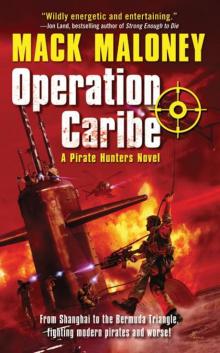 Operation Caribe ph-2
Operation Caribe ph-2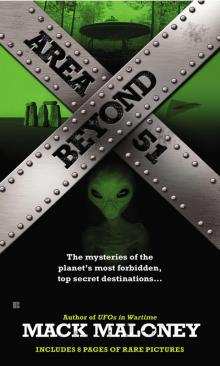 Beyond Area 51
Beyond Area 51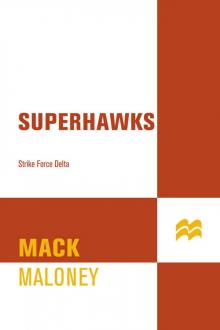 Strike Force Delta
Strike Force Delta B00447820A EBOK
B00447820A EBOK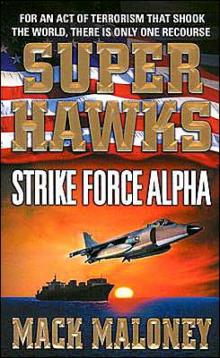 Strike Force Alpha
Strike Force Alpha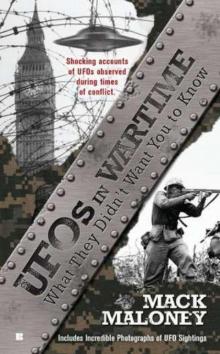 UFOs in Wartime: What They Didn't Want You To Know
UFOs in Wartime: What They Didn't Want You To Know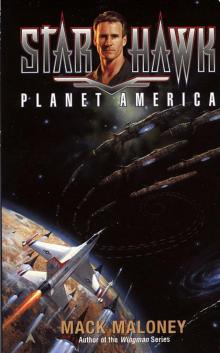 Planet America s-2
Planet America s-2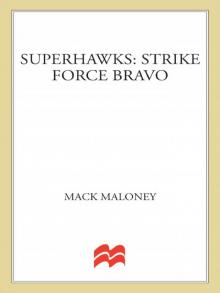 Strike Force Bravo
Strike Force Bravo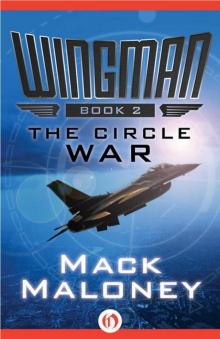 The Circle War w-2
The Circle War w-2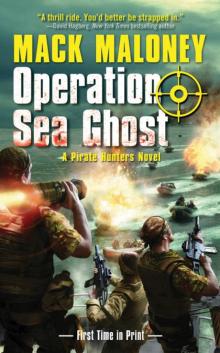 Operation Sea Ghost ph-3
Operation Sea Ghost ph-3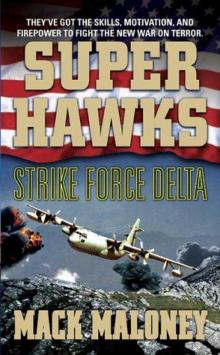 Strike Force Delta s-4
Strike Force Delta s-4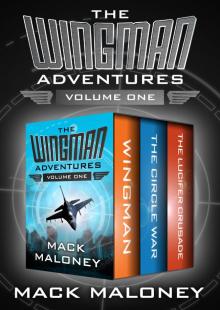 The Wingman Adventures Volume One
The Wingman Adventures Volume One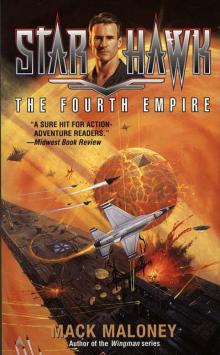 The Fourth Empire s-3
The Fourth Empire s-3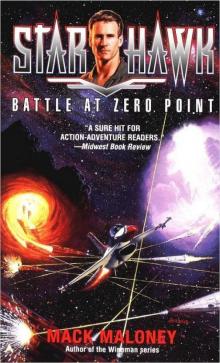 Battle at Zero Point s-4
Battle at Zero Point s-4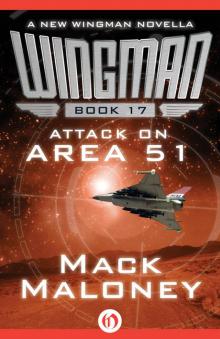 Attack on Area 51
Attack on Area 51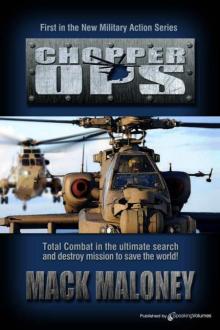 Chopper Ops
Chopper Ops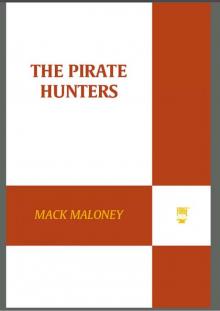 B003IKHEWG EBOK
B003IKHEWG EBOK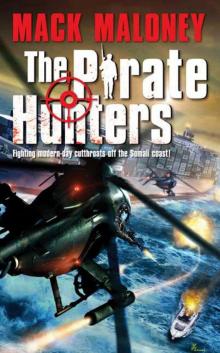 The Pirate Hunters ph-1
The Pirate Hunters ph-1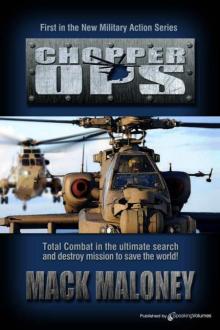 Chopper Ops co-1
Chopper Ops co-1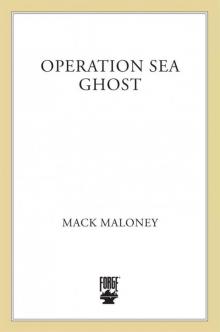 B005J4EW5G EBOK
B005J4EW5G EBOK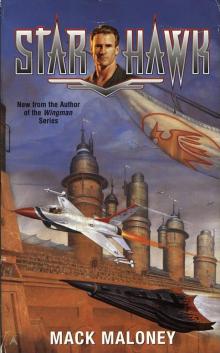 Starhawk s-1
Starhawk s-1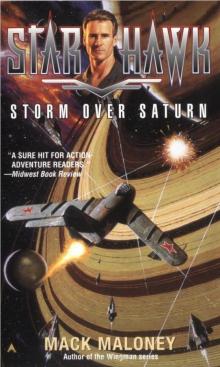 Storm Over Saturn s-5
Storm Over Saturn s-5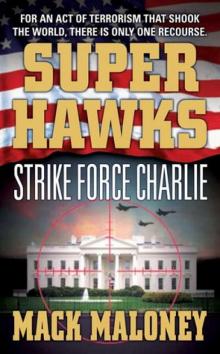 Strike Force Charlie s-3
Strike Force Charlie s-3